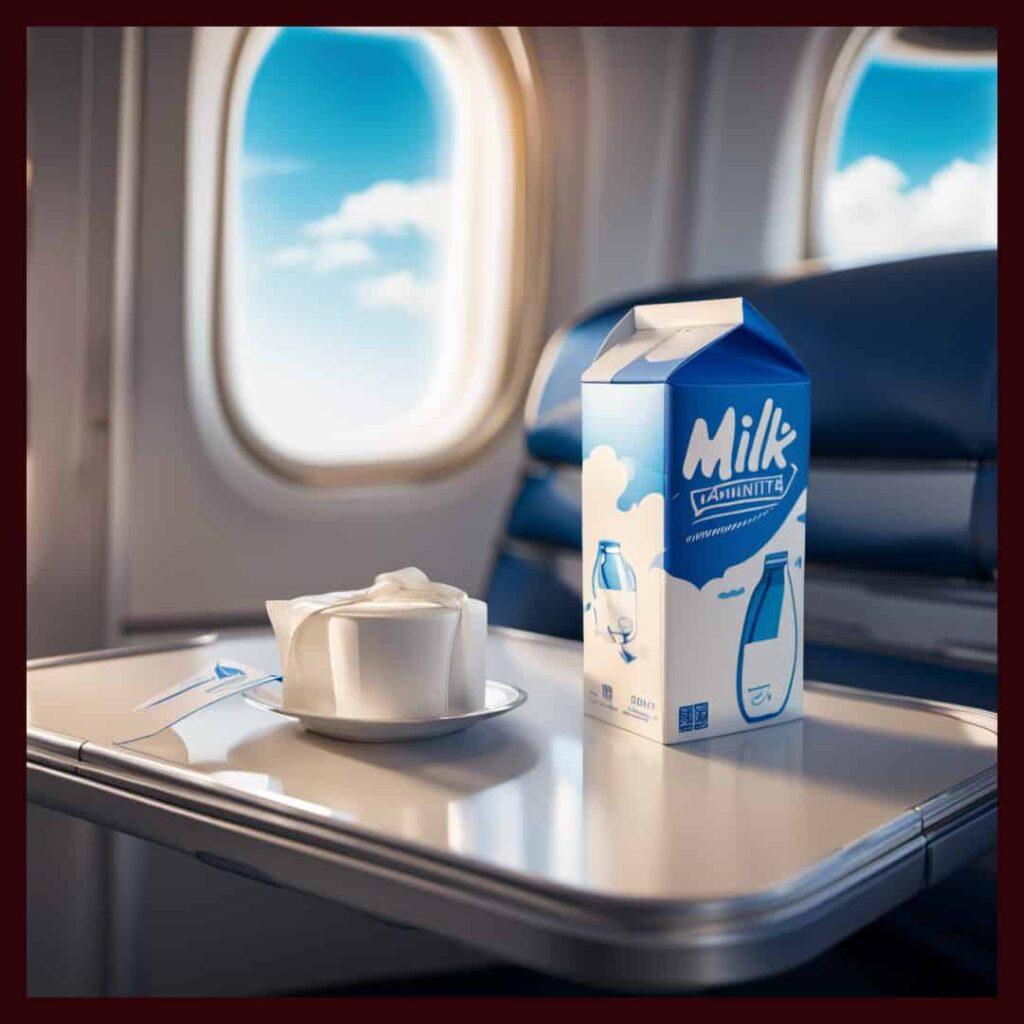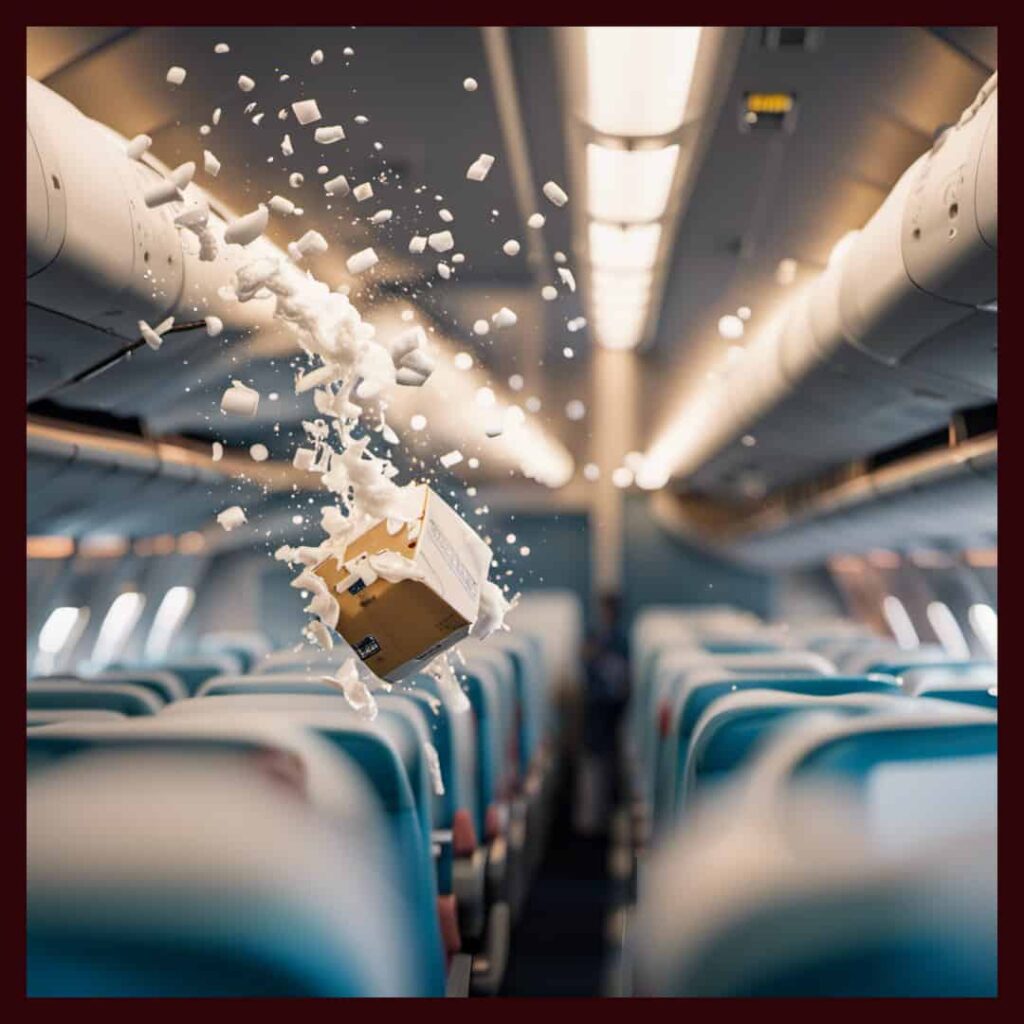Traveling with liquids can be a concern, especially when it comes to the question of whether a milk carton will explode on a plane. Many passengers worry about the safety and potential mess while flying with such items. This article aims to provide clarity on this common question and ensure you have a smooth travel experience.
Changes in air pressure and temperature during a flight can affect various items within luggage. Milk cartons, like other liquid containers, are subject to these changes as well. It’s essential to understand the factors that contribute to a possible explosion and the steps you can take to prevent it.
The US Transportation Security Administration (TSA) allows passengers to carry milk in both their carry-on and checked luggage. However, it’s crucial to follow guidelines and proper packing techniques to prevent any issues while traveling with milk.


Factors Affecting Milk Carton Explosion on Plane
Temperature Variation
During a flight, the temperature inside the cargo hold can undergo significant changes. When the temperature drops, the liquid milk may start to freeze, causing the milk to expand. Furthermore, frozen milk could experience thawing when returned to warmer cabin temperatures, potentially causing instability in the carton.
Air Pressure Changes
Aircraft experience fluctuations in air pressure as they ascend and descend. Cabin pressure is typically maintained at a lower level than at sea-level, which can lead to expansion of gases within a sealed container. This pressure variance might cause a milk carton to expand and potentially burst during flight, particularly if it is tightly sealed.
Internal Pressure of Milk Carton
Internal pressure inside the milk carton is influenced by bacterial growth. If milk is left unrefrigerated for an extended period, bacteria can proliferate and generate gas as a byproduct of their metabolic process. In a tightly sealed container, pressure builds up and could cause the carton to explode. This risk increases when milk is stored in a changing environment, such as an aircraft.
TSA Regulations for Liquids
Liquids, Aerosols, and Gels Limitations
The Transportation Security Administration (TSA) enforces the 3-1-1 Liquids Rule for air travel. Passengers are allowed to carry liquids, aerosols, gels, creams, and pastes in limited quantities.
Each container must hold no more than 3.4 ounces (100 milliliters). These travel-sized containers should fit into a single, quart-sized, clear plastic bag.
Carry-On Vs Checked Luggage
In carry-on luggage, the abovementioned 3-1-1 rule applies. For checked luggage, there is more flexibility.
Liquids, aerosols, and gels in larger containers are permitted in checked bags. It’s important to ensure these items are properly sealed to prevent leakage during transit.


Proper Packing Techniques for Liquids
Using Leak-Proof Containers
Leak-proof containers are essential for packing liquids in your luggage. Look for containers with tightly sealed caps or screw-on lids, as these will help prevent spills during travel.
Place your liquid-filled containers into a protective sleeve or cover, such as a plastic bag, which will further safeguard your belongings from potential leaks.
Utilizing Ziploc Bags
Ziploc bags are a great choice for containing liquids in your luggage. Squeeze any air out before sealing the bag, as this reduces the risk of leaks or spills.
For added protection, consider double-bagging your liquids or using freezer bags, which are often more durable than standard sandwich bags.
Bubble Wrap
Bubble wrap provides an excellent cushioning layer for liquids in your luggage. You can use it to wrap individual bottles or containers, preventing them from coming into contact with other items in your luggage.
Additionally, bubble wrap helps absorb and disperse the pressure changes that can occur during air travel, reducing the likelihood of your liquids exploding or leaking.


Other Common Liquid Items in Travel
Shampoo
When traveling, carrying small bottles of shampoo is the best option for your hair care needs. Most airports limit the size of liquid containers to 3.4 ounces (100 ml), so be sure to pack accordingly.
Beauty Products
Similarly, beauty products such as lotions and makeup should be in containers smaller than 3.4 ounces. To save space, consider using multi-purpose products that can serve more than one function while on your trip.
Medications
If you need to bring medications, keep in mind the TSA permits larger quantities of liquid medications. Make sure they are labeled and stored in a separate bag for screening purposes.
Soft Drinks and Alcoholic Beverages
When packing drinks, be aware that soda cans and other beverages may be subject to the same 3.4oz (100ml) restrictions. Alcoholic beverages are allowed in checked luggage, but check with your airline for their specific guidelines.
Additionally, remember to pack appropriate clothing for your destination. Lightweight clothes that can be layered are often the most versatile.
Alternative Solutions for Transporting Milk
Shipping Milk Separately
While flying with milk might seem challenging, one option is to ship milk separately to your destination. Using courier services can ensure your milk arrives without any issues. Remember to check with the Transportation Security Administration for any restrictions.
Purchasing Milk at Destination
Another alternative is to purchase milk at your destination. This can save you from worrying about packing and shipping milk, allowing you to maintain the recommended cold storage during the journey. Additionally, it provides an opportunity to explore local milk options and enjoy a taste of your destination.
Final Tips and Precautions
When passing through the airport, it’s important to consider the TSA rules regarding liquids, especially when traveling with milk. If you’re carrying milk for infants or toddlers, you can bring containers larger than 3.4 oz / 100 ml in your carry-on luggage.
Proceed to the checkpoint with confidence, as the TSA agents are trained to handle these exceptions for baby food and milk. Remember that only a reasonable quantity of infant milk is allowed, so don’t bring excessive amounts.
A common concern is the possibility of milk cartons exploding on a plane due to pressure changes. While there have been instances of toiletries exploding on planes, it’s relatively rare for milk cartons to suffer the same fate.
You may come across various packing hacks on Twitter to prevent liquid explosions, but the most effective precaution is to pack milk cartons in airtight bags. This ensures that even if leaks occur, your luggage won’t be affected.
Always adhere to airline regulations regarding liquids and pack wisely to avoid unpleasant surprises. Following these tips could make your journey smoother and keep your belongings safe throughout the flight.
Frequently Asked Questions
Can liquid containers break in checked luggage?
Yes, liquid containers can break in checked luggage due to changes in air pressure and rough handling during transit. To minimize the risk, consider using travel-friendly containers and packing them securely.
Is it safe to pack UHT milk in a suitcase?
Yes, it is generally safe to pack UHT milk in a suitcase, as the packaging is designed to withstand varying conditions. However, take care to pack it securely to avoid potential spills or damage.
Are there restrictions on carrying milk products on board?
There are restrictions on carrying milk products in carry-on luggage. Milk products must be in containers of 3.4 oz / 100 ml or less, except when traveling with an infant or toddler, in which case larger quantities are permitted.
What is the best way to transport cow’s milk on a flight?
The best way to transport cow’s milk on a flight is in a carry-on, as allowed by regulations, or well-packaged in checked luggage to avoid spills. Packing powdered milk can be a useful alternative.
Can almond milk be packed in checked luggage?
Yes, almond milk can be packed in checked luggage. As with other liquids, ensure secure packaging to prevent spills or damage during transit.
What precautions should be taken while packing liquid containers?
When packing liquid containers, use travel-friendly containers and ensure they are well-sealed. Place them in a plastic bag or wrapped in a towel for extra protection. Be mindful of air pressure changes and TSA regulations for carry-on liquids.



